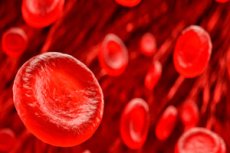Clinicians report success in first trial of drug in patient with thrombocytopenic purpura
Last reviewed: 14.06.2024

All iLive content is medically reviewed or fact checked to ensure as much factual accuracy as possible.
We have strict sourcing guidelines and only link to reputable media sites, academic research institutions and, whenever possible, medically peer reviewed studies. Note that the numbers in parentheses ([1], [2], etc.) are clickable links to these studies.
If you feel that any of our content is inaccurate, out-of-date, or otherwise questionable, please select it and press Ctrl + Enter.

A team of researchers at Massachusetts General Hospital used a new drug to save the life of a patient with immune thrombotic thrombocytopenic purpura (iTTP), a rare disease characterized by the uncontrolled formation of blood clots in small blood vessels. Vessels.
The team described the first clinical case of the drug to treat iTTP in the New England Journal of Medicine.
"The drug is a genetically engineered version of the missing enzyme in iTTP, and we showed that it was able to reverse disease progression in a patient with an extremely severe form of the condition," said lead author Pawan K. Bendapudi, MD, a researcher at Department of Hematology and Transfusion Services at Massachusetts General Hospital and Associate Professor of Medicine at Harvard Medical School.ITTP results from an autoimmune attack on the ADAMTS13 enzyme, which is responsible for breaking down a large protein involved in blood clotting. The main treatment for this life-threatening circulatory disorder is plasmapheresis, which removes harmful autoantibodies and provides additional ADAMTS13.
Plasmapheresis produces a clinical response in most patients, but can restore at most only about half of normal ADAMTS13 activity. In contrast, a recombinant form of human ADAMTS13 (rADAMTS13) offers the potential for significantly increased delivery of ADAMTS13.
RADAMTS13 was recently approved for patients with congenital thrombotic thrombocytopenic purpura, which occurs in patients born with complete loss of the ADAMTS13 gene.
It remains questionable whether rADAMTS13 could be effective in iTTP given the presence of inhibitory anti-ADAMTS13 autoantibodies, but Bendapudi and colleagues received approval from the US Food and Drug Administration to use rADAMTS13 provided by the protocol manufacturer compassionate use in a dying patient with treatment-resistant iTTP.
"We found that rADAMTS13 rapidly reversed the disease process in this patient, despite the current belief that inhibitory autoantibodies against ADAMTS13 would render the drug useless in this condition," Bendapudi said.
"We were the first physicians to use rADAMTS13 to treat iTTP in the United States, and in this case, it helped save the life of a young mother."
Bendapudi noted that rADAMTS13 infusion suppressed the patient's inhibitory autoantibodies and reversed the thrombotic effects of iTTP. This effect was observed almost immediately after administration of rADAMTS13, after daily plasmapheresis failed to induce remission.
"I believe rADAMTS13 has the potential to replace the current standard of care for acute iTTP. We will need larger, well-designed trials to evaluate this opportunity," Bendapudi said.
A randomized phase IIb clinical trial of rADAMTS13 in iTTP has begun.
